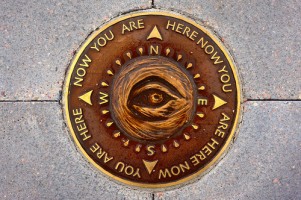
One (of many) ways artcentricity hinders community engagement is in its impact upon the relationship between the arts organization and its community as a whole. The “pursuit of excellence” as commonly understood often leads organizations to strive for a generic, rather than a location-specific, form of excellence. As one way of considering this, imagine a collection of season brochures or exhibition catalogs. In how many is it possible to tell where the arts activity is taking place? In other words, is there anything about the artistic content presented that suggests, much less reveals the city or neighborhood in which event occurs?
Focused exclusively on art, organizations see “the art world” as their frame of reference and so present programming derived from the traditions (usually European) of their art form rather than from the character of the communities in which they reside. It should be possible to imagine depth of connection with the community as one measure of excellence. To get there, an intent to be local must be incorporated into all planning.
Last March, my friend Sarah Lutman wrote one of the most thought-provoking blog posts related to community engagement I’ve ever seen: “What would a Minnesotan orchestra look like? A reverie on place” What follows may not do it justice, but I think it gets the points across.
Ms Lutman invites us to consider the wine industry. There are, apparently, two approaches to wine-making: creation of vins de terroir and of vins d’effort. “Wines of effort” reflect the stamp of the winemaker wrestling character from the wine by imposing his or her will upon it, dominating the end product. Vins de terroir reflect the wisdom of the region. The hills, climate, and soil create the grapes. It is the job of the vintner to sufficiently understand the region and its grapes so that he or she can select and blend them into brilliant representations of the terroir. The wines of Tuscany are and should be different from those of Burgundy.
Of course it takes time to learn a region well enough to accomplish this effectively. In winemaking this is not the process of a single lifetime. It is built upon learning across generations. This is why some oenophiles believe Old World wines are superior to New World wines. There have been centuries to perfect the relationship between the land, the grape, and the resultant wines.
The metaphor does not, however, need to imply that community engagement must take centuries to bear fruit. (Forgive the pun.) Awakening to the benefit of reflecting the locale in programming is the simple lesson, although doing so effectively requires effort to learn and understand the community as well as the winemaker understands the land that provides the grapes. It does take time, just not centuries.
What does this mean? There is no one answer because every city, community, neighborhood is different. Ms. Lutman’s post says the answer is found in dialogue with the community.
I would suggest a series of deep listening sessions all around the state, to ask the people themselves what sort of orchestra they envision and what they are able to do to help make that happen. Ask them what it would look like if the orchestra were Minnesotan. I promise you, their answers will be astonishing and inspiring, and will point the way forward. Then, begin the empathetic process of entering into new relationships with people, so that the orchestra our state has worked so long to build can be truly ours.
For Ms. Lutman, “the question of place is different here in Minnesota from what the answer will be in San Francisco, New York, or Atlanta. Our geography, our history, our cultural and social organization are very different from other cities’ and regions’ and a Minnesotan orchestra would reflect that.” As a preliminary example of how this might play out, she suggested that a Minnesota-oriented arts organization would reflect some of the following:
- Our state is very essentially populist.
- Our state appreciates and celebrates the homegrown.
- Our state is defined by water – rivers, streams, and lakes – and by forests and prairies.
- Our state has four seasons that express themselves beautifully and vigorously.
- Much more than nearly every other place, we are do-ers, go-ers, readers, joiners. We participate. We are engaged. We sing.
The point here is not to take this list as gospel, even for Minnesota. It does, though, provide insight into how similar local lists might have an impact on arts programming and activities.
Engage (by being local)!
Doug
- Photo:

 Some rights reserved by cibomahto
Some rights reserved by cibomahto
